Remember those restaurants that tried a little too hard to stand out from the crowd? Some eateries weren’t content with just serving good food—they needed theatrical performances, outlandish themes, or all-you-can-eat promises that defied economic sense. These defunct chains pushed their gimmicks to the extreme, attracting curious diners at first but ultimately failing when the novelty wore off or costs spiraled out of control.
1. Jekyll & Hyde Club
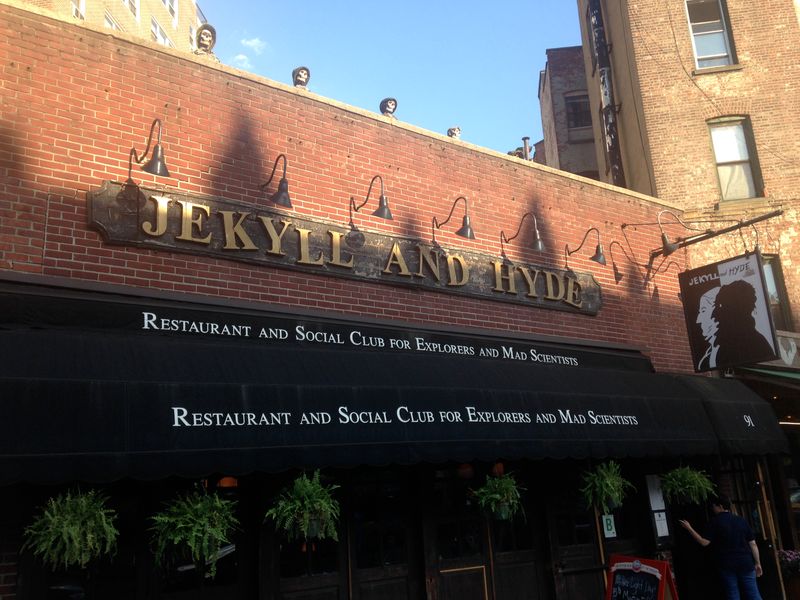
Horror-themed dining reached its pinnacle with this macabre Manhattan establishment where monsters lurked in corners and servers performed spooky skits every 30 minutes. The restaurant’s elaborate Gothic decor featured animatronic creatures that would suddenly come alive, startling unsuspecting diners mid-meal.
While initially a hit with tourists seeking Instagram-worthy moments before Instagram existed, the constant interruptions and mediocre food at premium prices eventually drove customers away. Parents complained about traumatized children, and regulars grew tired of the same repetitive performances.
By 2015, the flagship location closed its doors after 24 years of business, proving that even the most elaborate theme can’t sustain a restaurant when the food becomes an afterthought.
2. Pup ‘N’ Taco
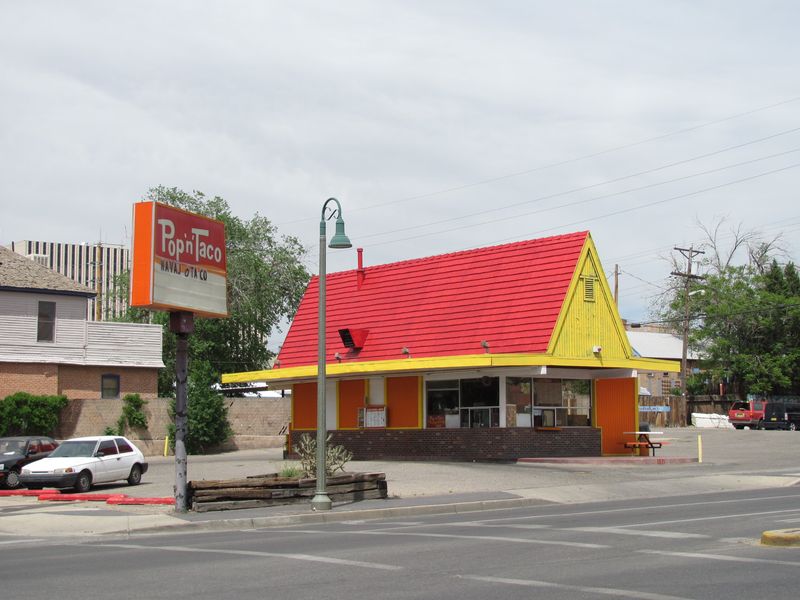
California’s quirky fast-food hybrid offered an unusual pairing that puzzled marketing experts but delighted hungry customers in the 1960s and 70s. Serving hot dogs alongside tacos seemed bizarre, yet the chain expanded to nearly 100 Southern California locations during its heyday.
Founded in 1965 by Russell Wendell, the restaurant’s cartoon dog mascot and bright orange buildings became local landmarks. Their signature items included a 30-cent taco and budget-friendly hot dogs, drawing in families and teenagers looking for affordable meals.
The chain’s downfall came in 1984 when Taco Bell’s parent company purchased 99 locations and promptly converted them, erasing this unique concept from the fast-food landscape forever.
3. Royal Castle
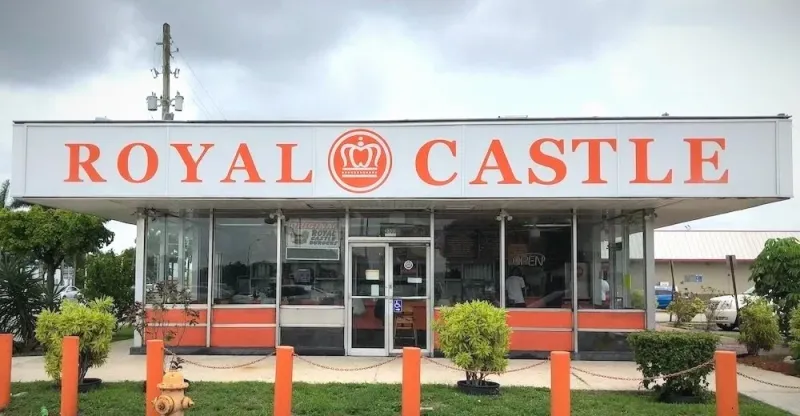
Before White Castle dominated the mini-burger scene, Royal Castle reigned supreme across the southeastern United States. Founded in 1938 in Miami, this chain pioneered the small square burger concept, selling them for just a nickel each alongside their famous birch beer served in frosted mugs.
The restaurants featured distinctive white castle-like structures with royal imagery, creating an unmistakable brand identity. At its peak, Royal Castle operated over 175 locations, primarily in Florida and Georgia, with their 24/7 service attracting late-night diners and early birds alike.
Unfortunately, the chain’s royal gimmick couldn’t withstand the fast-food revolution of the 1970s. Larger competitors with deeper pockets ultimately forced Royal Castle to surrender its throne by 1975.
4. Beefsteak Charlie’s
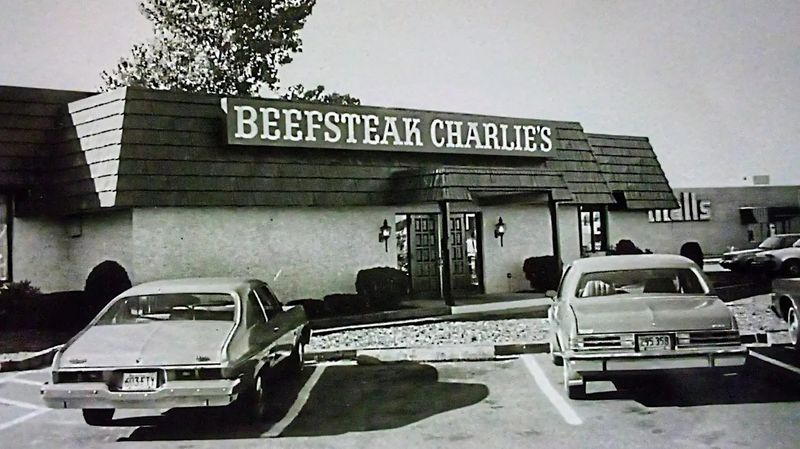
“You’re gonna get spoiled!” promised this New York-based chain that took all-you-can-eat to financially ruinous extremes. Beyond unlimited salad and shrimp, Beefsteak Charlie’s boldly offered bottomless alcoholic beverages—a gimmick that attracted college students and budget-conscious drinkers who maximized their visit values.
Founded in 1976, the chain expanded rapidly to over 60 locations across the Northeast. The restaurants featured red-and-white checkered tablecloths and walls covered with vintage photographs, creating a casual steakhouse atmosphere that felt more upscale than its prices suggested.
By the late 1980s, the economic reality of unlimited booze and seafood caught up with them. Customers drinking their weight in sangria while camping at tables for hours proved that some deals are simply too good to be sustainable.
5. Tiki Bob’s Cantina
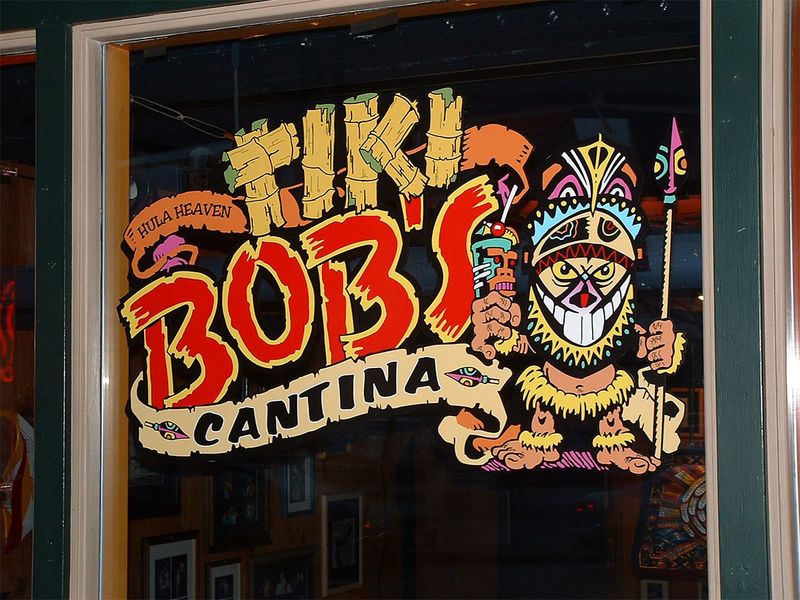
Riding the mid-century Polynesian craze, Tiki Bob’s blended exotic tropical decor with potent rum drinks served in ceramic mugs shaped like grimacing island gods. The first location opened in San Francisco in 1955, featuring bamboo-lined walls, thatched roof elements, and waiters in Hawaiian shirts.
Founder Bob Bryant crafted an immersive experience where mainland Americans could pretend they were on a South Pacific vacation without leaving their city. The signature oversized “Suffering Bastard” cocktail became notorious for its strength, with servers limiting customers to just two per visit.
When authentic cultural experiences became more accessible through affordable air travel in the 1970s, the kitschy appeal of fake palm trees and paper umbrellas faded. The last location closed in 1980, marking the sunset of America’s tiki restaurant golden age.
6. The Magic Pan
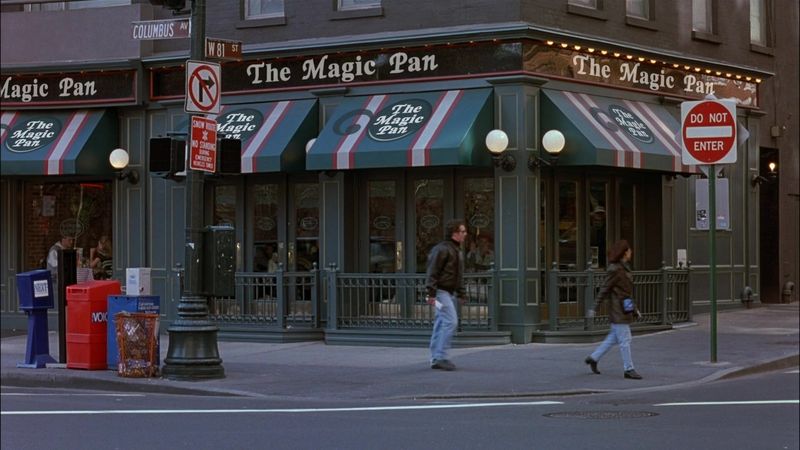
Spinning crepe-making contraptions mesmerized mall shoppers across America during this chain’s heyday in the 1970s and 80s. Founded by Hungarian immigrants Lazlo and Paulette Fono, The Magic Pan turned the simple French pancake into theatrical dining with specialized rotating crepe cookers visible to waiting customers.
Each restaurant featured dark wood paneling, stained glass accents, and an old-world European charm that made it feel like a special occasion destination. Their menu offered both savory options filled with chicken or seafood and dessert varieties loaded with fruits, chocolate, and whipped cream.
When shopping mall traffic declined in the 1990s, so did The Magic Pan’s customer base. By 1994, the chain’s parent company closed most locations, proving that even the most enchanting food gimmick can’t overcome changing consumer habits.
7. Mammy’s Kitchen
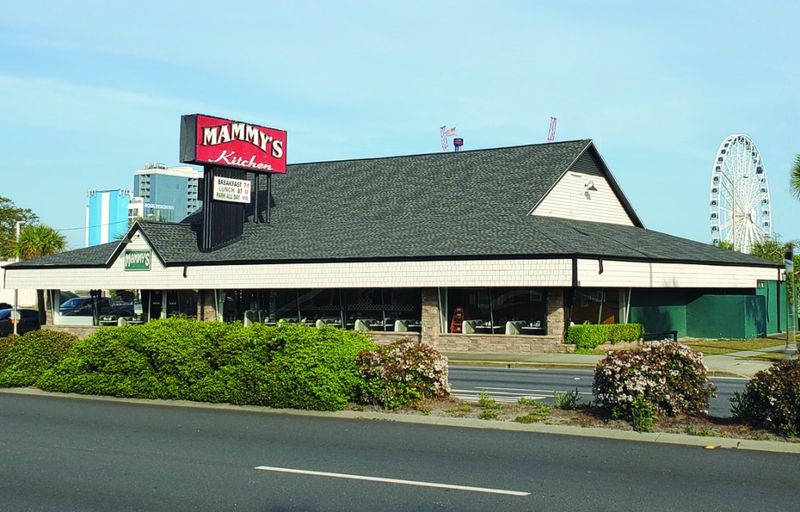
Problematic from its very concept, this Southern chain leaned heavily into offensive stereotypes with its mammy-figure logo and plantation-style decor. Founded in Myrtle Beach in the 1950s, the restaurant specialized in breakfast foods and Southern comfort dishes served in a setting that romanticized the antebellum South.
Waitresses wore exaggerated costumes meant to evoke domestic servants from the pre-Civil War era. The walls featured caricatured artwork and cotton-themed decorations that ignored the painful historical context of plantation life.
As American society became more conscious of racial insensitivity, Mammy’s Kitchen faced increasing criticism. The original Myrtle Beach location managed to survive until 2015, but expansion plans always faltered as the restaurant’s concept became increasingly recognized as inappropriate and out-of-touch with modern values.
8. Steak and Ale
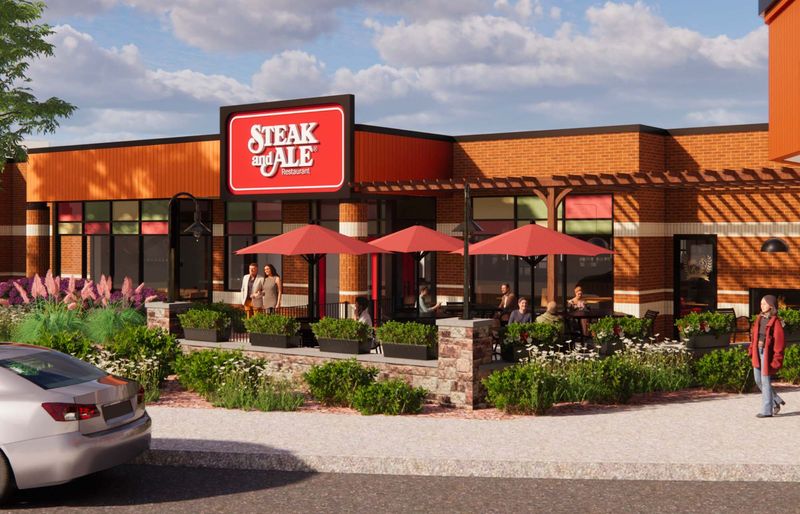
Medieval-themed dining reached the suburbs through this chain that brought suits of armor, stained glass windows, and English pub aesthetics to strip malls across America. Founded by Norman Brinker in 1966, Steak and Ale pioneered concepts we now take for granted: the salad bar, casual-but-upscale dining, and affordable steak dinners.
The restaurants featured dark wood interiors with brass accents, creating an atmosphere that felt special without being stuffy. Their Tudor-style buildings with distinctive pitched roofs became landmarks in suburban communities, offering middle-class families a taste of fine dining without breaking the bank.
Despite its innovations, the chain couldn’t adapt to changing tastes and increasing competition. Parent company Metromedia Restaurant Group filed for bankruptcy in 2008, closing all remaining locations and ending the reign of this once-mighty restaurant kingdom.
9. Wuv’s Hamburgers
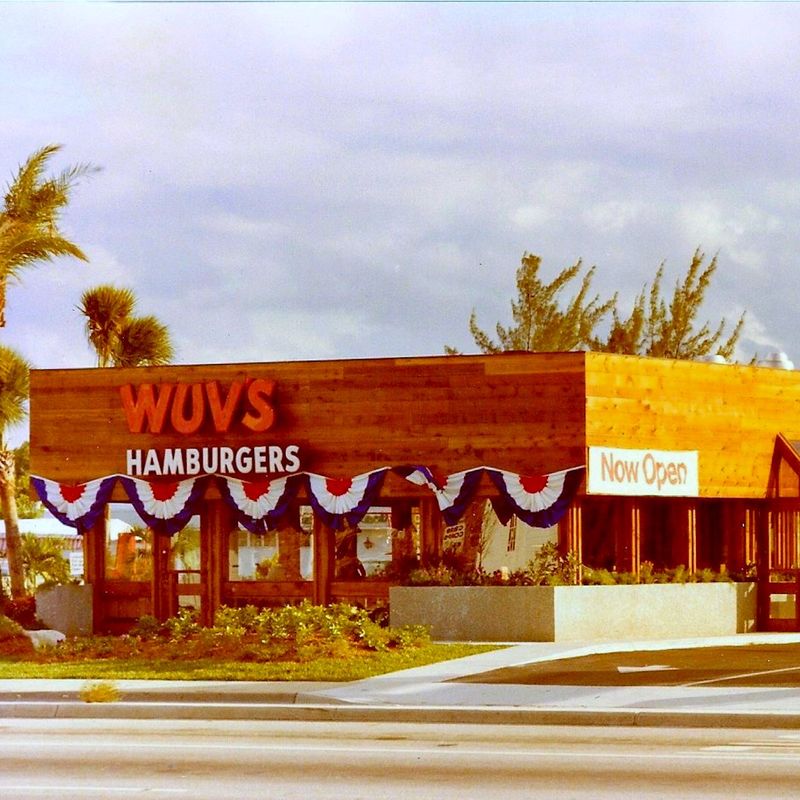
Heart-shaped burgers and cutesy marketing defined this fast-food chain that tried to out-cute the competition in the 1970s. Founded in 1969 by country music star Webb Pierce, Wuv’s distinctive red and white buildings featured heart-shaped windows and an almost sickeningly sweet aesthetic.
The chain’s gimmick extended beyond decor to the food itself. Their signature hamburgers were pressed into heart shapes before cooking, and desserts came topped with heart-shaped sprinkles. Even their slogan—”Wuv You”—leaned hard into the saccharine brand identity that initially attracted families with young children.
By the early 1980s, the novelty had worn off as competitors offered better quality food without the cloying presentation. The chain’s rapid expansion proved unsustainable, and most locations closed by 1981, proving that love alone can’t sell mediocre burgers forever.
10. Mr. Steak
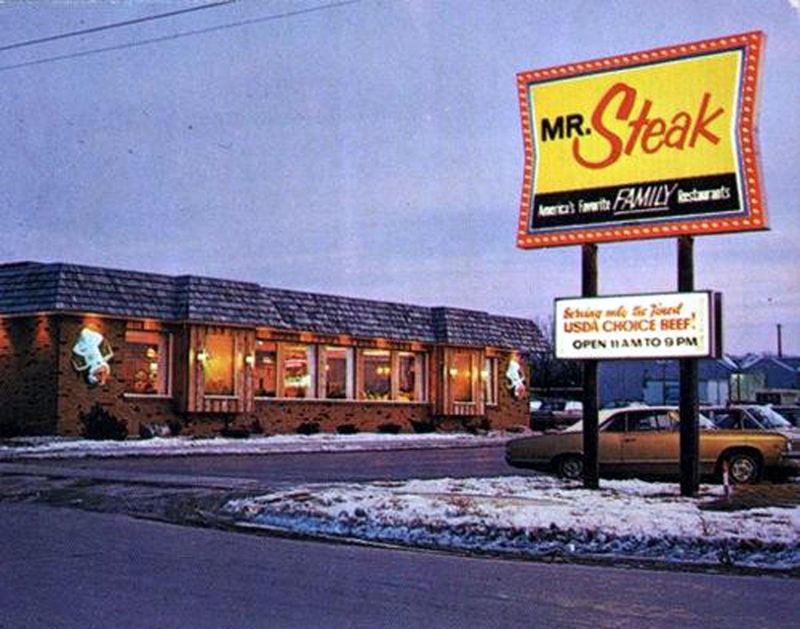
A cartoon steer wearing a top hat and monocle welcomed diners to this mid-range steakhouse chain that inexplicably featured a gentleman cow happily guiding customers to eat his own kind. Founded in 1962 in Colorado, Mr. Steak expanded to over 300 locations by the 1980s, positioning itself as an affordable family steakhouse.
The restaurants featured Western-themed decor with a twist—formal elements like chandeliers and cloth napkins attempted to elevate the dining experience. Their signature offering was the “Presidential Cut” sirloin, served with a baked potato wrapped in gold foil and unlimited trips to the salad bar.
As steakhouse competition intensified with chains like Outback and Longhorn offering more distinctive experiences, Mr. Steak’s confused identity lost its appeal. By the mid-1990s, most locations had closed or converted to other concepts.

Comments
Loading…